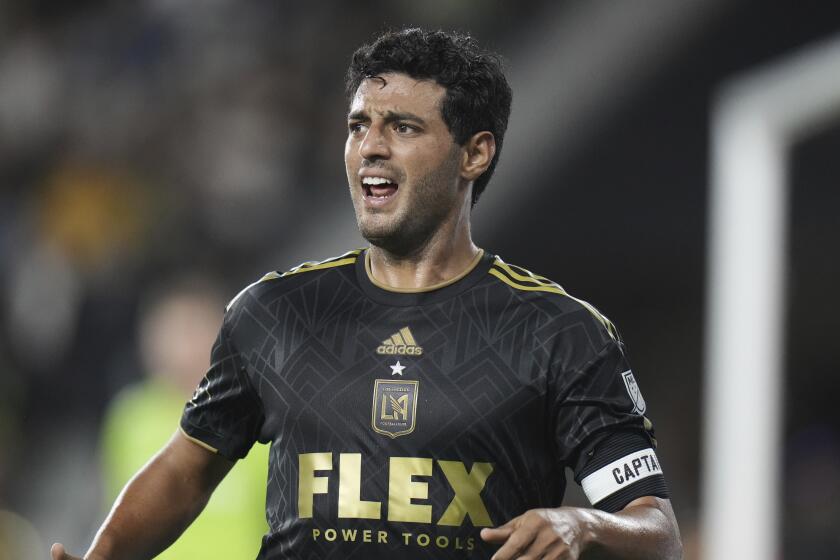Phillies’ Time Has Come and Sadly Gone
- Share via
In one corner of the Philadelphia clubhouse, Travis Lee smiled and laughed and swapped stories with reporters. He was one of the new kids in town.
In another corner, Scott Rolen did not smile. He spoke politely, in a flat tone.
“It’s a difficult time for the guys who have been here for a while,” said Rolen, the Phillies’ third baseman and cleanup hitter. “We were excited coming into the season. We’re sorting things out right now.
“It’s kind of like spring training around here a little bit.”
Some teams can afford to play to win every year. They’re the winners at trade deadline time, the ones holding lists of available prospects in one hand and a credit card with no limit in the other.
Then there are teams like the Phillies, who can afford to win once every few years. Unfortunately for the Phillies, this was their year, and they bombed.
“When you’re a middle-market or small-market club, you have to look at it that way,” San Diego Padre General Manager Kevin Towers said.
“You have to know when to strike, when to go out and spend. If you spend and you don’t win, it’s going to set you back for a long time.”
The Padres struck in 1998. They paid heavily, in cash and prospects, for ace Kevin Brown. They advanced to the World Series-- and won an election for a new ballpark.
After the Padres traded catcher Carlos Hernandez on Monday, none of the players in their lineup for Game 1 of the 1998 World Series remained on their active roster, barely a year and a half later. (Outfielder Tony Gwynn and shortstop Chris Gomez are on the disabled list.)
If the Padres can win again by the time their ballpark opens in 2002, they’ll be tickled.
“Unless you’re an elite team with a big bankroll, things don’t change quickly,” Gwynn said.
The Phillies gambled on 2000. Their winning percentage had gone up for three consecutive seasons, and a core of young position players needed pitching support beyond ace Curt Schilling. So the Phillies traded three prospects to the Padres for starter Andy Ashby and spent $3 million on free-agent closer Mike Jackson, whom the St. Louis Cardinals had shied away from because of health concerns.
Jackson blew out his shoulder. Schilling, who had shoulder surgery in December, missed the first month of the season. Ashby won four games, with a 5.68 earned-run average. Paul Byrd, a 15-game winner and all-star last season, won two this season, with a 6.51 ERA.
The Phillies crashed. They were 11 games out on the last day of April and 17 games out on the last day of May. Oh, and the Phillies’ play hardly inspired local officials to elevate those new ballpark plans from bureaucratic purgatory.
So the Phillies dumped Ashby and Schilling. The Atlanta Braves grabbed Ashby, eligible for free agency this year, for two prospects. The Arizona Diamondbacks nabbed Schilling, eligible for free agency next year, for four youngsters, including Lee.
“We have an encore rebuilding,” Rolen said.
Without winning, of course. By the time some young pitchers develop, a strong group of position players--Rolen, first basemen-outfielders Lee and Pat Burrell, catcher Mike Lieberthal and outfielder Bobby Abreu--may be too expensive for the Phillies to afford.
And how the Phillies must have cringed Tuesday when they faced Adam Eaton, one of the three pitchers traded for Ashby. Eaton, 22, whom the Padres promoted from double-A in May, is 2-2 with a 3.46 ERA.
“You’ve got to take a chance,” Phillie Manager Terry Francona said. “We’ve still got a core of young players. That won’t get lost on me. Whether we can put together the group to compete with the Braves, I don’t know.”
More to Read
Go beyond the scoreboard
Get the latest on L.A.'s teams in the daily Sports Report newsletter.
You may occasionally receive promotional content from the Los Angeles Times.











